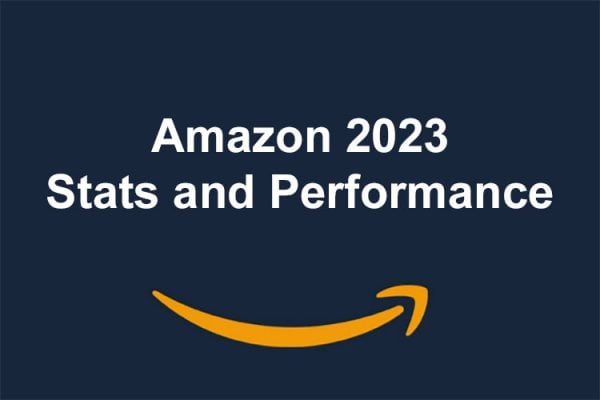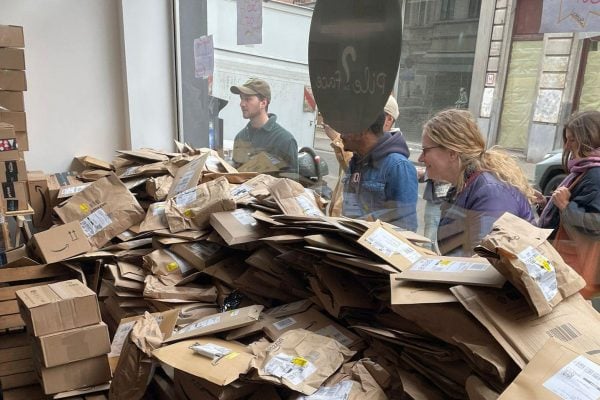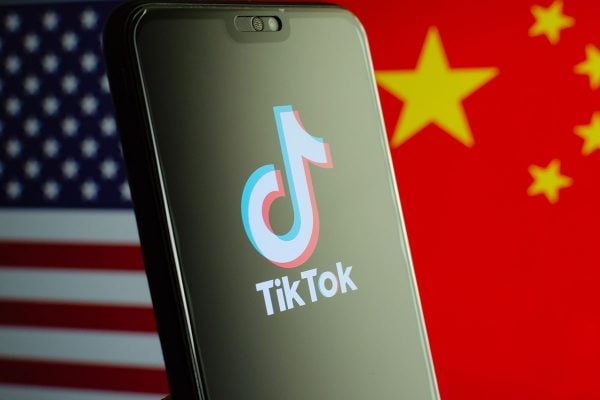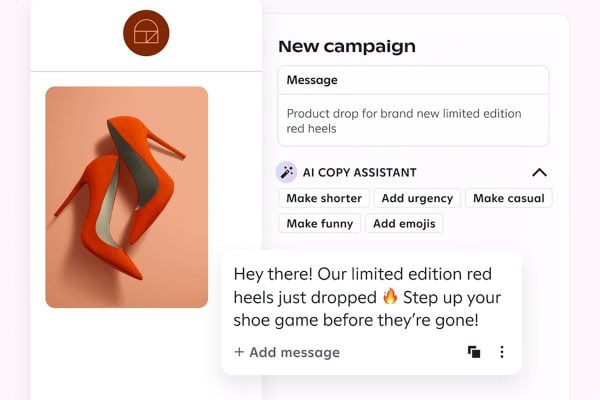ChannelAdvisor EU Catalyst has all been based around four themes this year – Mobile, Verticals, Social and Cross Border Trade.
Scot Wingo, CEO of ChannelAdvisor
Scot Wingo opened the conference with an over view of the ecommerce landscape, from what I hear he was a lot gentler on eBay than he was at the US catalyst, and rightly so as eBay UK is performing much better eBay.com.
According to Scot’s figures Amazon is still growing faster much faster than eBay, although eBay is still three times as large. A major difference this year is the growth of social commerce which now accounts for 4% of ecommerce and mobile commerce at 6% of the total.
Marketplaces now account for around 27% of ecommerce and search, which for the UK largely means Google, accounts for around 44% of ecommerce. Scot pointed out that whilst social is still a small part of ecommerce now is the time to embrace it as in a few years time it has the potential for huge growth. The message came through loud and clear that whereas in the past marketplaces, websites and paid search pretty much embraced ecommerce, companies now need to position themselves ready to take advantage of the way buyers are starting to shop.
Clare Gilmartin, VP Marketplaces, Europe, eBay
Clare continued the theme of a multi-channel approach to ecommerce being essential. The online and offline shopping experience is being to blur with shoppers researching online and then purchasing in a retail environment, and sometimes the reverse seeing a product in a shop and then checking online for the best possible price.
The UK is the fastest growing country in the EU for mobile usage – 1 in 4 have purchased on a mobile device. A surprising 22% of the UK have a mobile device as their only form on Internet access.
Clare also pointed out that websites need to tailor the shopping experience to the way that buyers shop. Vertical shopping experiences such as eBay’s Fashion Hub, updated tech pages and eBay motors are examples of how sites can cater for buyers needs.
Cross border trade is critical to eBay’s future success in Europe. The UK is already the most successful eBay country site with a higher spend per head of population anywhere in the world. eBay UK attracts around 17 million visitors each month, but across eBay’s European country sites are are 50 million buyers. However if you take the EU as a whole there are 180 million buyers willing to shop on eBay even though they don’t have an eBay site in their country.
20% of eBay’s trade is now cross border and if you’re not shipping overseas then you’re missing out on a large proportion of the available business.
Gavin Sathianathan, Platform Partnerships, Facebook Commerce
Facebook were the third company to present on the main stage at Catalyst, and they have an interesting story to tell. They told how they introduced site features which have propelled their site features ahead of the competitions even though they lacked features.
An example of this is Facebook photos – site users can upload pictures but when launched there was no cropping and resizing or any of the features major photo sharing sites like Flickr have. What made Facebook pictures successful was the ability to tag yourself and your friends in photos. Because users could now easily find their friends in pictures and in fact they’d appear in your Facebook News Feed it incentivised users to add pictures.
In the same way Facebook have the “Like” button, which allows users to show their interest in various products and services. The Like button along with the “Send” button have now migrated off Facebook and you can now share products from many websites with your Facebook friend.
This social shopping where you can let your friends see the items you’re interested in and they can comment is similar to the way people shop in the high street.
Even better is when a buyer links their Facebook profile to a merchants website and share products that they’ve actually purchased. This is where social shopping becomes most powerful as products purchased are shared with your friends as a personal recommendation.
Social commerce may not be a large proportion of the total today, but if the current trends continue it’s likely to grow over the next few years. Whilst today online retailers are spending on paid search in the future if they can turn their customers into their ambassadors it’s a much stronger recommendation.
This theme continued with a panel of retailers already experimenting with social media. Richard Wilson, Sales & Operations Manager of B&Q told how they use Twitter primarily as a customer service tool, but by encouraging their customers to have conversations around the DIY projects they’re doing gives a demonstrable increase in sales.
Natalie Primus, Online PR & Social Media Executive of Republic agrees but cautions trying to do to much too quickly. She suggests starting with one social network site and getting that right before trying to replicate your efforts across all sites.
There is little doubt that shopping has always been a social experience, whether that be a trip to town or gathering around a clothing cataloge at home. The challenge for online retailers is to replicate this online to allow buyers to encourage each other to spend more.










6 Responses
Chris, what was the question you were going to ask Gavin Sathianathan from Facebook?
Have any Tamebay readers had much success with growing their brands on Facebook?
Has anyone got a facebook store? Are you having any success with it. I have a third party that keep emailing me offering to do it for me.
I was at the conference and very much enjoyed every minute of it.
I think the point of getting your business on facebook is not about selling and having a store front and from Gaving’s speach he was not very keen on storefronts and payment gateway etc. Getting you business on facebook and other social media is about building your brand and it should be part of your brand awareness exercise regardless if there is any short term gain or not.
Thanks Scot, Clare and Gavin, it was really informative conference.